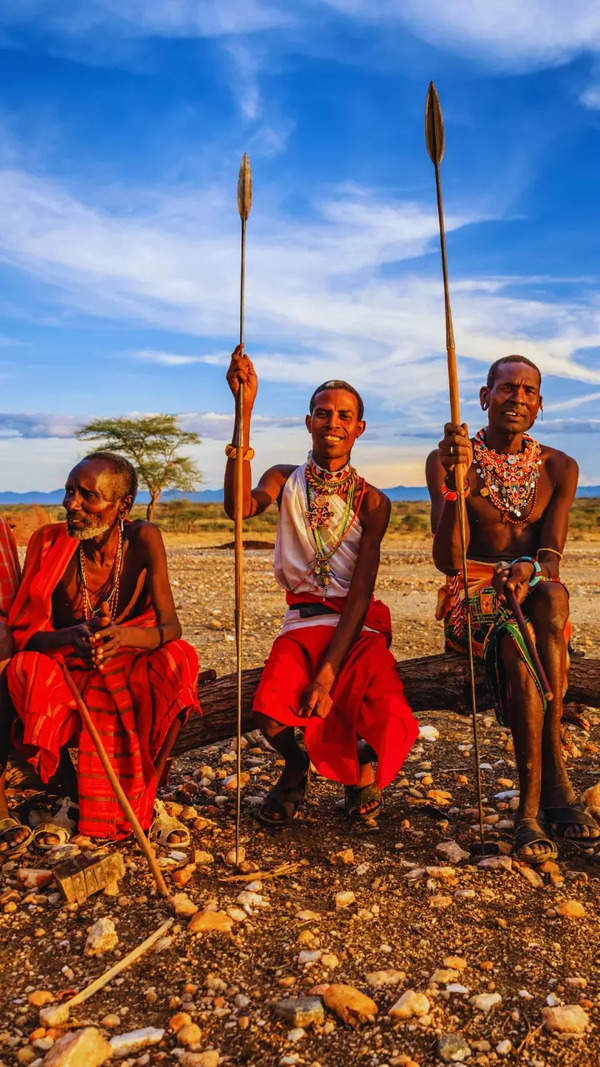- News
- India News
- Delhi’s mercury soars above normal, UP braces for prolonged heat, and Rajasthan's Barmer sets April record
Trending
Delhi’s mercury soars above normal, UP braces for prolonged heat, and Rajasthan's Barmer sets April record
NEW DELHI: The first week of April has set the tone for a punishing summer across north India, with Delhi, parts of Uttar Pradesh, and Rajasthan already experiencing unusually high temperatures and heatwave-like conditions. The India Meteorological Department (IMD) has forecast more intense heat in the coming days, prompting state administrations to swing into action.
Delhi: Rising mercury and poor air quality
Delhi recorded a maximum temperature of 38.2°C on Sunday—3.1 degrees above the seasonal average—while the minimum dipped to 18.5°C, which is 1.5 degrees below normal, according to the IMD. Relative humidity oscillated between 43% and 27%, and the weather department has warned of heatwave conditions on Monday with the mercury likely to touch 41°C. A minimum of 21°C is expected.
Air quality continues to worsen in the capital, with the Central Pollution Control Board (CPCB) reporting an Air Quality Index (AQI) of 209 at 4 pm—classified as ‘poor.’
The IMD has issued a grim forecast for Uttar Pradesh, projecting prolonged periods of extreme heat through April, May, and June. Maximum daytime temperatures are expected to consistently exceed 40°C, particularly in the Bundelkhand region.
Atul Kumar Singh, a MeT official, was quoted by PTI as saying, "Above-normal maximum temperatures are expected across Uttar Pradesh. The Bundelkhand region will be the epicentre of this extreme heat," with districts like Jhansi and Chitrakootdham bracing for severe heatwave conditions.
The first week of April has already seen temperatures soar past 40°C in cities like Kanpur, Varanasi, Prayagraj, and Hamirpur. On Saturday, Prayagraj recorded 41.6°C—4.2 degrees above average.
Night temperatures, too, are expected to remain abnormally high, reducing chances of respite. The MeT department warned of fewer rainy days during this period.
Medical experts stress that such conditions can be fatal. “Heat waves disrupt the body’s natural temperature regulation, leading to severe dehydration and potential health complications,” said Dr. Shantanu Mishra, a general practitioner in Lucknow.
Uttar Pradesh Relief Commissioner Bhanu Chandra Goswami said district administrations and hospitals have been alerted. “Hospitals have been asked to prepare for a surge in heat-related illnesses,” he added.
Animal Husbandry Minister Dharmpal Singh said shelters have been asked to ensure shaded areas and water for livestock, while veterinary teams are on standby.
Rajasthan: Barmer breaks 26-year April record
Rajasthan’s Barmer district clocked a staggering 45.6°C on Sunday, breaking its previous record of 45.2°C set on April 3, 1998. The Jaipur Meteorological Centre confirmed that temperatures in Barmer were 6.8 degrees above normal.
Other regions also baked in severe heat: Jaisalmer recorded 45°C, Chittorgarh 43.2°C, Jodhpur 43°C, Kota 42.4°C, and Jalore 42°C. The heatwave is expected to intensify, with temperatures in some areas forecast to rise by another 3–4°C in the coming days.
The Met department warned that southwestern Rajasthan may see maximum temperatures between 44–45°C, and eastern Rajasthan between 42–44°C on Monday.
End of Article
FOLLOW US ON SOCIAL MEDIA











